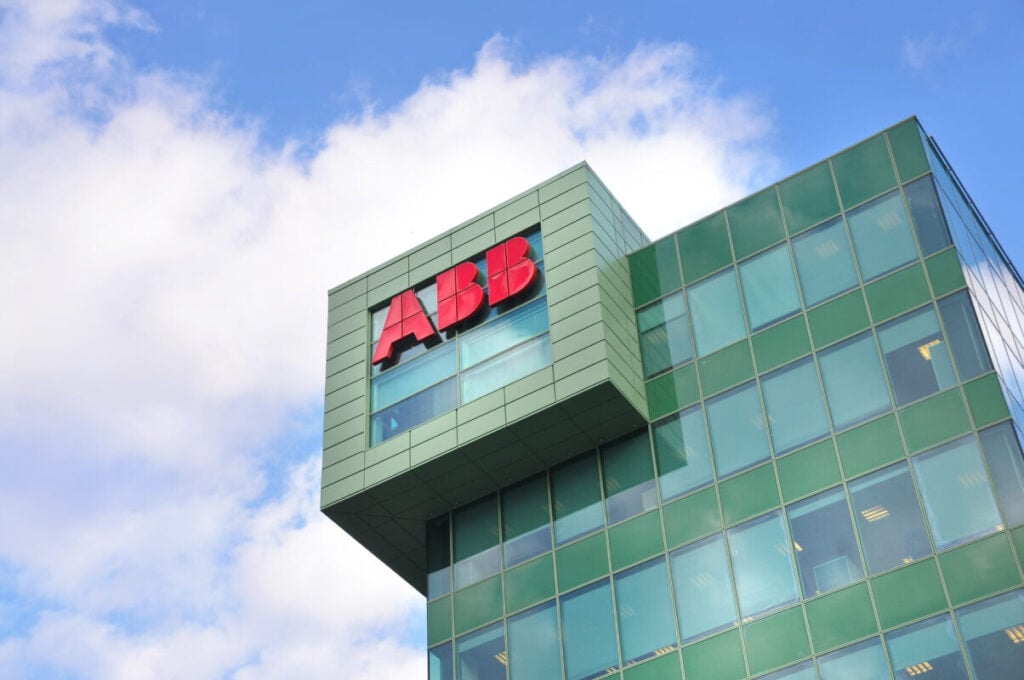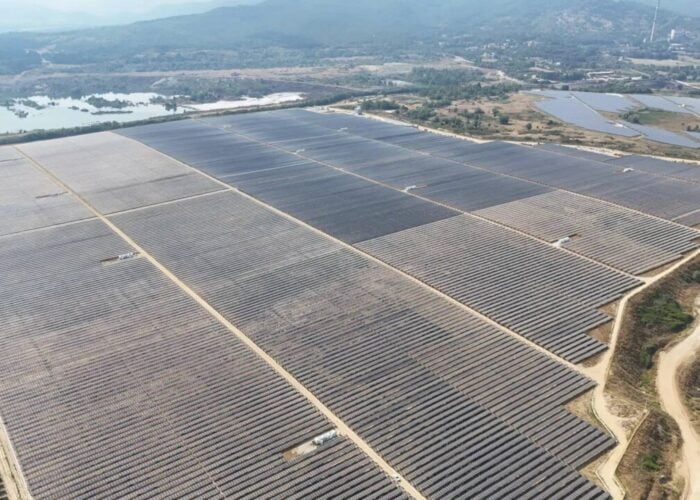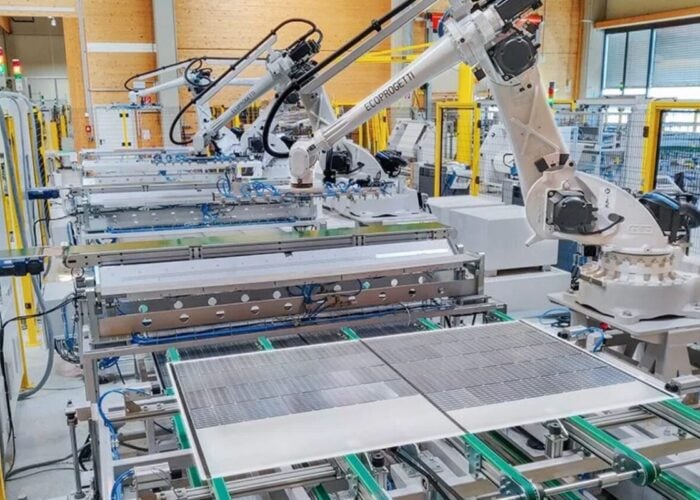
Engineering firm ABB has announced that its 2,000V OTDC switch is the first switch-disconnector of this size to receive certification from UL Solutions, a leading industry certification body.
The three-pole DC switch-disconnector is designed for use at 2,000V-scale PV plants; ABB notes that 2,000V modules have become increasingly “commercially available”, but that products like inverters, combiner boxes and switches have not yet been scaled up to 2,000V on the same scale. The company estimates that using its new switch can reduce electrical balance of system costs by 15% compared to lower-voltage switches, due to faster installation times, the use of fewer components and lower labour costs.
Try Premium for just $1
- Full premium access for the first month at only $1
- Converts to an annual rate after 30 days unless cancelled
- Cancel anytime during the trial period
Premium Benefits
- Expert industry analysis and interviews
- Digital access to PV Tech Power journal
- Exclusive event discounts
Or get the full Premium subscription right away
Or continue reading this article for free
The company already offers its OTDC switch for use in the PV, energy storage and electric vehicle (EV) charging sectors, providing switching and isolation services for these industries. The switch comes in three series, for between 16 and 1,000 amperes, at the scale of 1,500V.
Receiving industry accreditation, in the form of the UL98B certification, for a 2,000V product, however, is an important milestone for a number of electrical engineering sectors, including solar, that have been steadily increasing voltage at their products over several years.
In 2012, for instance, GE deployed 1,500V DC inverters at a Belectric project in Germany, which was a record-breaking milestone after 600V and 1,000V had been the industry standard at various points in history. Breaking the 2,000V threshold, however, has been on the horizon for the solar industry in particular for some time; in May 2024, UL Solutions awarded the first certification to a 2,000V module, developed by Chinese leader JinkoSolar.
“This certification is a breakthrough for the solar industry,” said Bill Stewart, product marketing director at ABB Smart Power. “We’re proud to be the first to market with a UL-certified 2,000V solution that directly addresses our customers’ demands for higher efficiency and lower costs without compromising quality.”
‘Not an easy thing to do’
Figures from S&P Global forecast the world’s supply of 2,000V solar products to increase from less than 5GW in 2026 to 380GW by 2030. Indeed, the same figures predict that by the end of this decade, 2,000V products will account for 77% of all utility-scale PV projects worldwide, which would significantly lower the costs of solar systems, according to Brian Nelson, renewables segment leader at ABB.
“They’re able to build out their projects at a lower capex and opex, because as you go up in system voltage … your power goes up and your current can actually come down,” Nelson told PV Tech Premium earlier this year. “It will reduce your balance of system costs because you can use smaller conductors, while maintaining the same amount of power”
However, in an interview with PV Tech Power for the upcoming issue of PV Tech’s quarterly journal, Nelson said that despite this milestone, he does not expect 2,000V technology to become commonplace in the next two to three years.
“Going from 1,500V to 2,000V is not an easy thing to do,” Nelson said. “We’re starting to talk about a pretty substantial DC voltage, and so, technologically, as a component supplier, that’s a technical challenge that took us a little while to figure out.
“The industry is going to be talking about it a lot more, but are projects going to be built at 2,000V at the end of this year? No, I don’t think so. I think this is probably more of an end of 2027, even into 2028, deal if I want to be more realistic.”
Liam Coman, solar market analyst at S&P Global Commodity Insights, also explained to PV Tech Power that the US and China will likely lead the transition to the 2,000V era, reflecting the steps that manufacturers in both markets have taken towards this future, and that he expects the rest of the world to integrate the technology around 12-18 months later.
Read the full version of our interview with Nelson about entering the 2,000V era in the upcoming issue of PV Tech Power, which is planned to launch on Monday 28 July.






